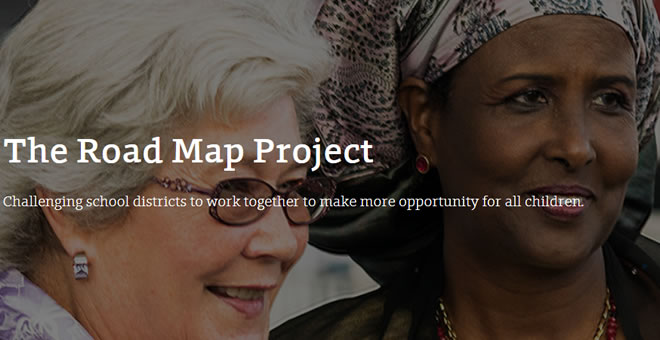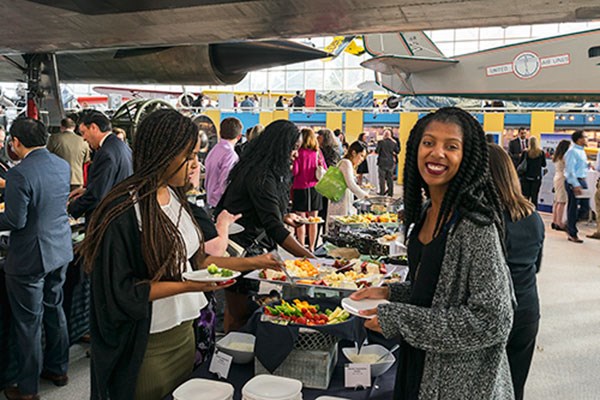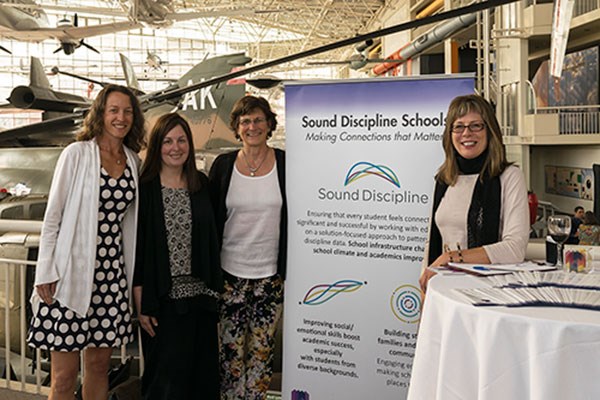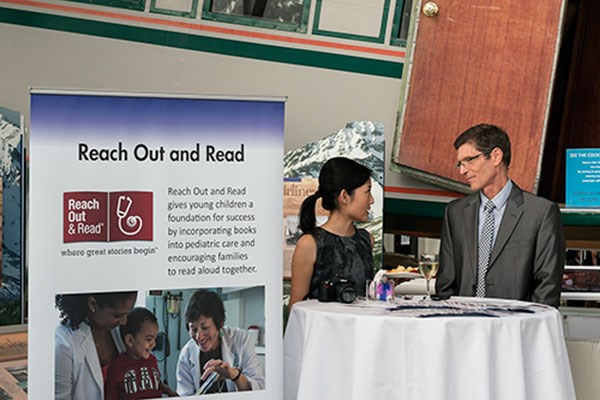
Tony Gomez
Monday, June 20, 2016

Photo Credit: Drew Lindgren
Somali community leader Hamdi Abdulle navigated effortlessly through the crowd at the Road Map Project’s celebratory event last Thursday. She seemed to know everyone.
Not long ago, she had asked herself, “What is this Road Map?” with as much confusion as someone lost off of I-5 on a side road in Tukwila.
Marking the resolution of a Race to the Top grant from the U.S. Department of Education, a consortium of seven school districts and the Puget Sound Educational Service District — together dubbed the Road Map Region — hosted a gathering of education and community leaders at the Museum of Flight.
“The past five years have been transformational,” explained Auburn School DistrictSuperintendent Alan Spicciati, citing an ongoing collaboration across the school districts.
All seven districts are located in the southern part of King County, which is home to over 70% of the county’s low-income students and English-language learners. Sixty percent of King County’s children of color also live in this region, which includes South Seattle down to the county line.
This means that the bulk of King County students who are negatively impacted by the Opportunity Gap — the persistent inequity in the American education system — reside in this region. Indeed, nationally and locally, students who are low income, English-language learners or come from a number of ethnic communities do not enjoy the same outcomes as some of their peers.

Photo Credit: Drew Lindgren
The Road Map Projectis a long-running effort that challenges the districts of the south county to work together to make more opportunity for all children.
“Typically you’re accountable to your local school board, you’re busy and you don’t have exposure to other ideas,” says Spicciati of the tunnel vision that can occur. The Road Map Project challenges districts to share ideas in a way the superintendent likens to bringing together interlocking puzzle pieces.
With so many monumental challenges — from improving early education and literacy to improving equity, battling poverty and lifting graduation rates — it would not be surprising for the mood to be somber. But, an opposite mood prevails. The Road Map partners are electric:
“I was humbled, moved by the openness,” shared Venitia Richardson, a Race to the Top official from Washington, D.C. “You’ve heard the old adage ‘It takes a village’? Well this is the village, right here.”

Photo Credit: Drew Lindgren
“We cannot only live together, but thrive together,” explains Kent Mayor Suzette Cooke. While others might look at the Seattle suburb and see challenges because of the intense diversity of languages and high numbers of immigrants and refugees, Cooke sees only strengths, citing these new Americans’ deep commitment to education, family and work. “We are getting a fresh start in this country.”
But actually collaborating across district and city lines can be difficult, particularly in districts facing extreme struggles. One Seattle principal lamented having built ties only to have turnover at the partner school nullify his efforts. A number of teachers saw Road Map as something that applied more to the upper-level administrators than the rank-and-file classroom educators.
Despite these problems, one of the most promising areas of growth fostered by the Road Map Project has been the further involvement of community-based organizations (CBOs) in the educational process. Major findings from the project’s last report point to improved ways in which districts are talking, not only with each other, but with the cultural experts in their own backyard. These alliances result in focused activities that improve opportunities for kids and lead to more authentic connections with families.

Photo Credit: Drew Lindgren
“We know how to really bring families to schools,” says Mona Han of the Coalition for Refugees from Burma. For community activists like her, the value of the Road Map Project has been to bring everyone to the same table.
Even with support from Race to the Top winding down, Road Map Project partners intend to keep collaborating to solve complex problems. Reflecting on the project’s emphasis on building alliances, Hamdi Abdulle explains how the intent was never to simply fix everything in five years; it was to lay out a route toward those eventual goals, by finding like-minded travelling companions.
